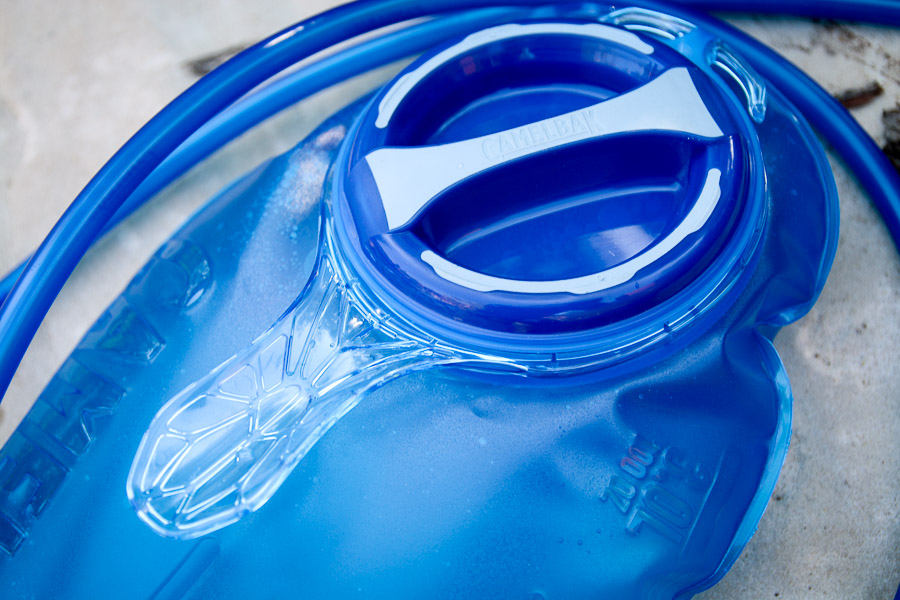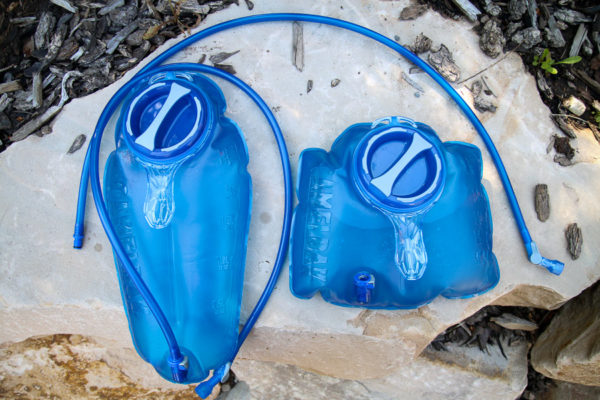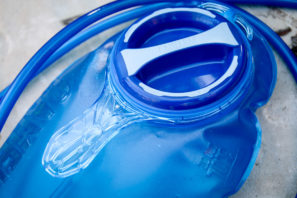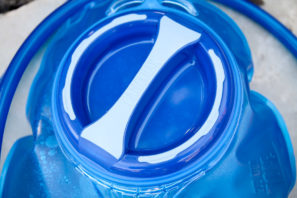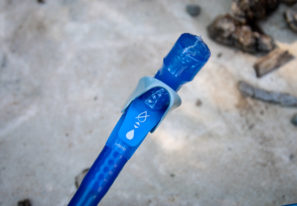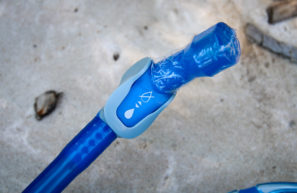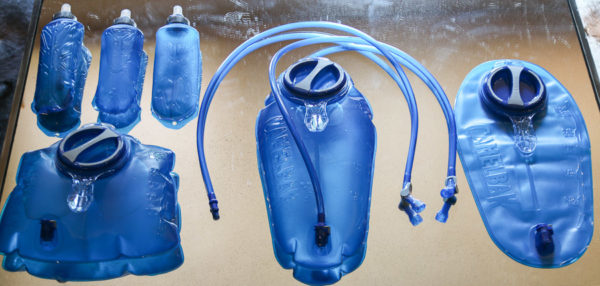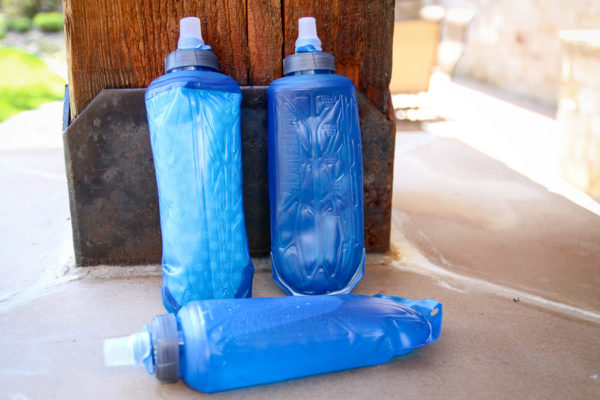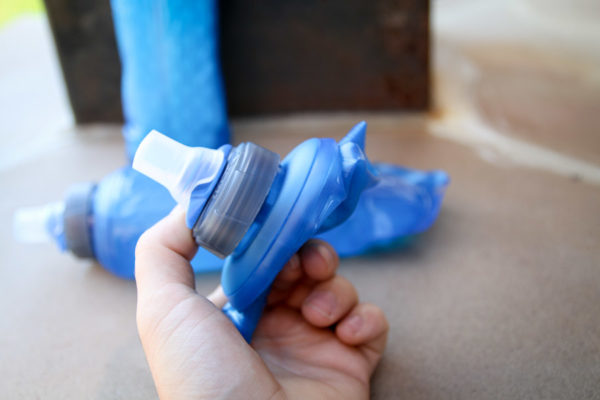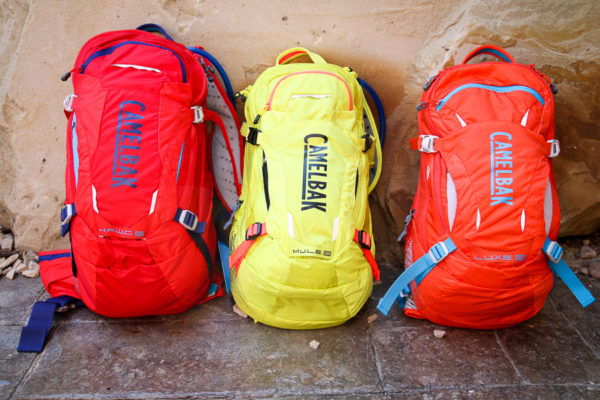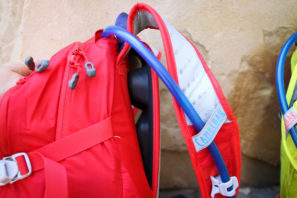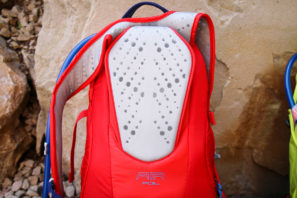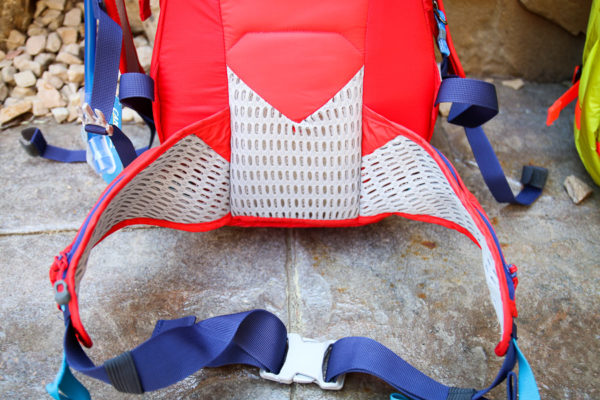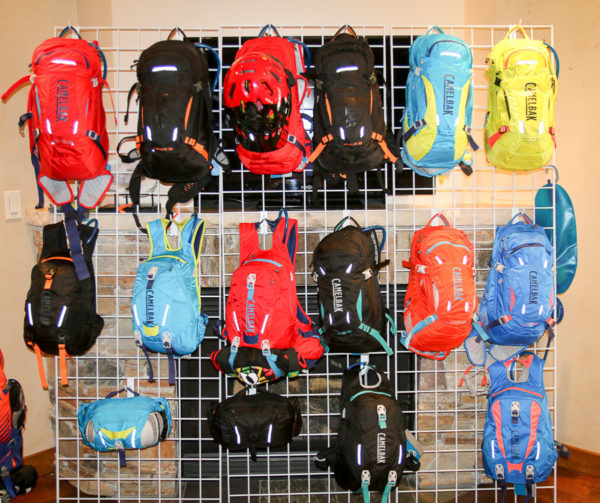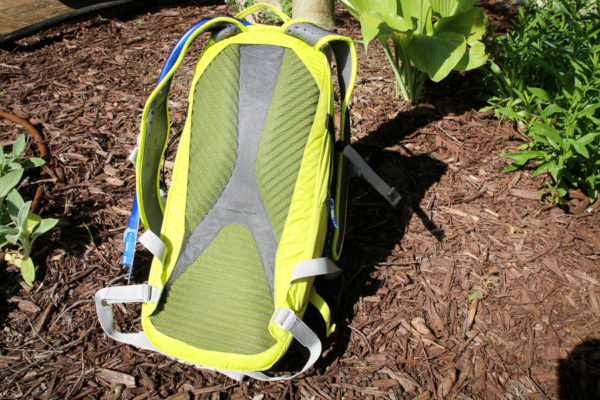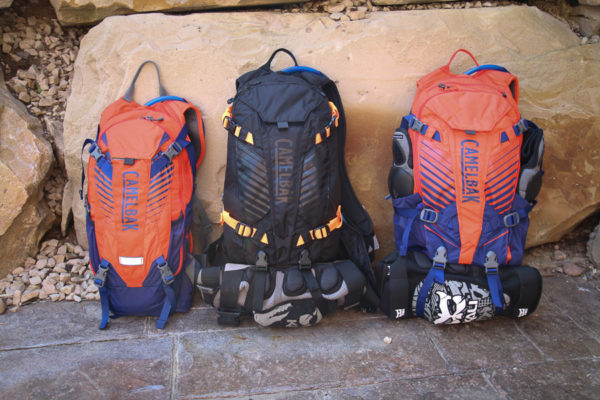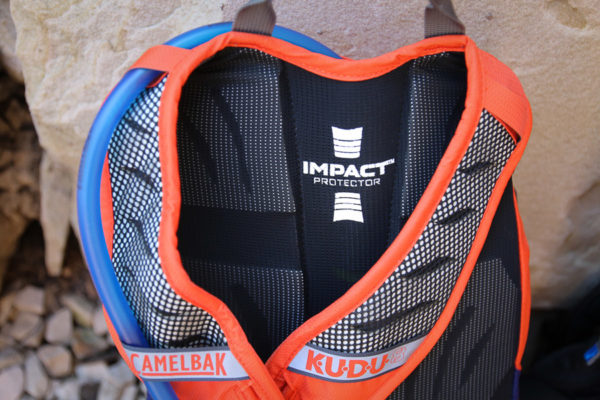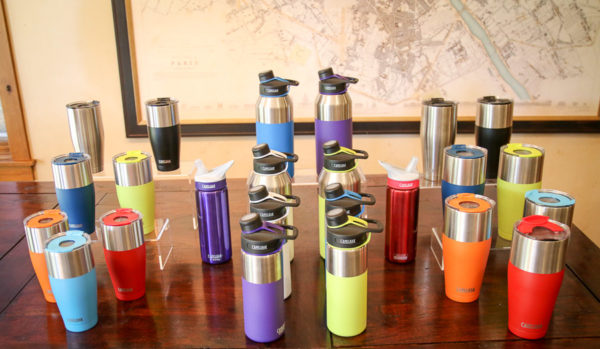Looking at the current Camelbak product, it’s hard to imagine that the first bladders were inspired by IV bags. In the past 26 years the bladders have seen major updates every 5-6 years, and based on what we’ve seen at PressCamp, the latest generation is the best one yet.
Called the Crux Reservoir, Camelbak has focused on a few key areas to improve the bladder’s usability but also improve the performance of the hydration packs themselves. Combined with new LR versions of their most popular larger packs, Camelbak continues to provide excellent options for hydration…
Starting with the act of filling the reservoir, a big change can be found at the cap. Rather than the previous quarter turn locking cap which had to be properly aligned to lock in and seal, the new cap simply threads on wherever you start it. Equating it to a gas cap or a pickle jar, the cap is super easy to close and combined with the new pan handle, the bladder is easier to fill than ever.
The other big change came from their desire to increase the flow rate of water from the tube. The ability to deliver more water through the same pull means less time with the bite valve in your mouth, and less exertion if you’re really trying to drink a lot of water at once. To accomplish this, Camelbak had to find where the restrictions in flow were coming from. Fortunately for them it wasn’t from the bite valve or from the Quick Link disconnect system. Instead it came from the diameter of the hose and the right angle on the on/off valve. The new system now uses a larger diameter tubing and a 45 degree instead of 90 degree angle on/off valve which results in a 20% increase in flow rate. Not only does that increase the amount of water flow, but Camelbak claims the larger mass of water in the tube causes it to heat up more slowly which should make that first sip a little more enjoyable.
The new on/off valve is super easy to use with one hand and is paired with their famous medical grade silicone self sealing Big Bite valve. The new high flow hose system is compatible with current reservoir Quick Link systems so you could upgrade if you choose.
Moving forward, all reservoirs will include the new Crux design elements, though some bags may not have certain features like the Quick Link or on/off valve. Cruz reservoirs will be offered in 1.5, 2, and 3L standard, and 3 Liter Lumbar models for LR packs. Of course all reservoirs use the same PU film that is BPA/BPS/BPF free and uses Hydroguard antimicrobial technology.
Camelbak is also using their PU film to create a new line of collapsible flasks with the Quick Stow series. Due to Camelbak’s material, these flasks have a bit more structure than similar products which should make them easier to hold and stuff in a jersey pocket.
Offered in a single wall and a double walled insulated version, the flasks hold a half liter (17oz) and use a large threaded cap with a locking bite valve. The cap is large enough to fit ice or powders inside and the insulated version will double the amount of time water will stay cold. Available in October, these will retail for $20/28.
Continuing with their expansion of the LR series (LowRider), the long running Mule and HAWG packs as well as the Luxe get a huge upgrade this year as well. The Lowrider concept really improves how the packs ride on your back when weighed down, but until now the capacity of their LR series packs has been fairly small. The Mule and Luxe now offer 15L (3L water/12L gear), and the HAWG is a crazy 30L (3L water with a sleeve for a second reservoir). All three use the new Crux Lumbar 3L reservoir with an internal pocket for the handle and compression straps to keep the reservoir compressed.
Just as important as keeping the weight of the water low, Camelbak wanted to make sure the packs were very well ventilated since they have a large footprint on your back. To do so they created a new system called the Air Foil which uses a thermo molded foam pod on the upper back which provides a flat contact patch. The pod surface uses perforated closed cell foam which is also found on the shoulder straps. At the hip belt there is two density open cell foam behind a 3D vent mesh panel along with vent mesh pads on the hip belt. On a few hot rides here in Park City the ventilation was noticeable and appreciated.
Other features include a larger fleece lined cell phone pocket, helmet clips that allow you to get access to the pack without removing the helmet, a removable rain cover, and their magnetic tube trap. The Mule LR will sell for $150 this October.
With the introduction of the Mule, HAWG, and Luxe LR, 50% of Camelbak’s mountain range now falls into the category – which is good, since we’ve really like all we’ve tried so far.
On the entry level side, Camelbak still found a way to upgrade the fit and is now offering a new Air Director back panel for packs like the Mule, Lobo, Luxe, and Magic. This panel uses a spring loaded mesh over a closed cell foam structure for a comfortable fit that is more affordable than the Mule LR for instance.
Finally, on the pack side Camelbak is introducing a new KUDU 8. The KUDU series is the “enduro” pack of the line with integrated CE2 back protection, but a lot of riders found the 12 an 18 models to be a bit too big for shorter rides. The new 8 builds in the same protection but in a smaller pack.
Their packs may cover the “during” portion of your ride, but for before and after Camelbak is expanding their Lifestyle Thermal collection. Built with vacuum insulated stainless steel, the bottles and mugs are designed to keep beverages hot or cold for hours. New is the Chute insulated bottle and the Kickback insulated mug. Making it easier to ‘ditch disposable,’ the 20/40oz chute will keep things cold for 48 hours and hot for 6, while the 20/30oz Kickback offers 8 hours of cold and 4 hours of warmth. To keep things from spilling, the Chute uses a stowable threaded cap while the Kickback has a two sided splash proof lid. Made with 18/8 stainless steel that is BPA/BPS/BPF free, the vessels won’t absorb tastes or odors and are part of the Spring 2017 line up.
